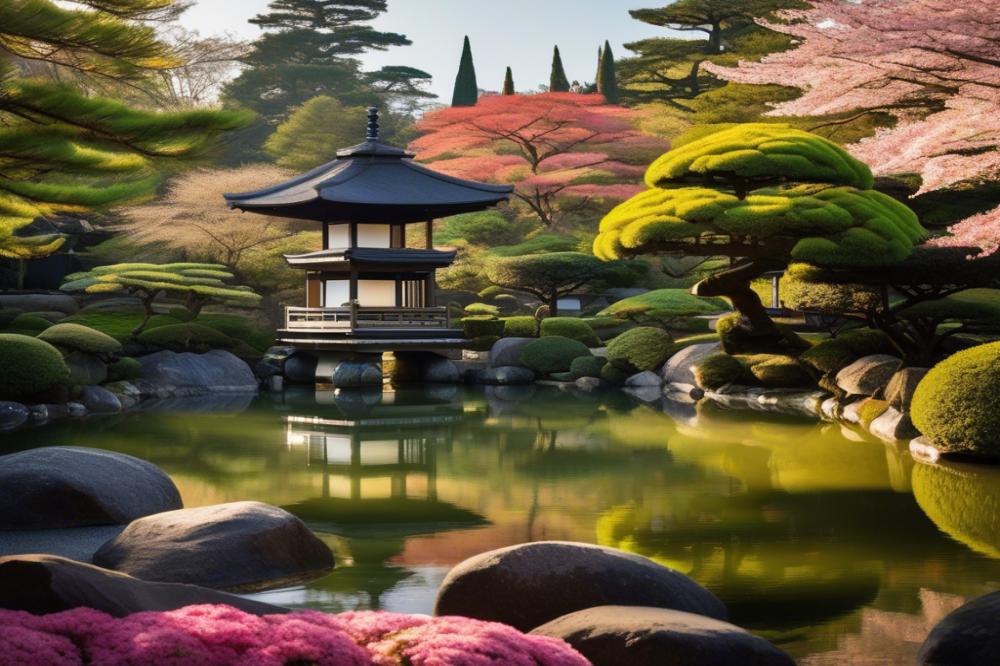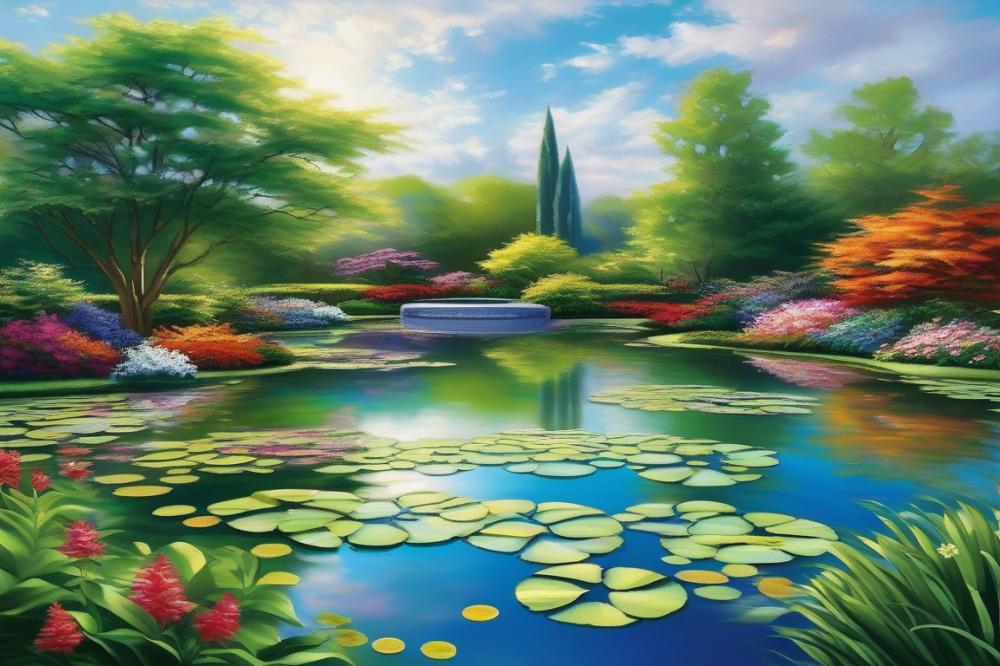Introduction
Japanese Gardens captivate the imagination with their serene beauty and thoughtful landscaping. The essence of these gardens lies not only in their natural elements but also in their design philosophy. Each stone, plant, and water feature plays a role in creating a space that invites peace and reflection. Among the elements employed in these gardens, reflective surfaces stand out as vital components. They enhance the overall aesthetics and contribute to a sense of harmony with nature.
water features and ponds frequently capture light, creating a stunning interplay between reflection and reality. This unique aspect encourages visitors to meditate on the interconnectedness of all elements within the garden. Mirrors and other reflective surfaces add depth to the design, inviting observers to engage with their surroundings in new ways. They transform simple landscapes into immersive experiences, allowing for a deeper appreciation of tranquility.
The connection between reflective surfaces and the calming atmosphere of Zen gardens cannot be overstated. Such surfaces help create an illusion of expanded space, allowing the mind to roam freely. By mirroring the beauty of the garden, they reinforce the core principles of balance and harmony. Ultimately, Japanese garden design invites individuals to leave behind their busy lives. Instead, they can embrace a moment of stillness and reflection amid the lush environment.
The Role of water features
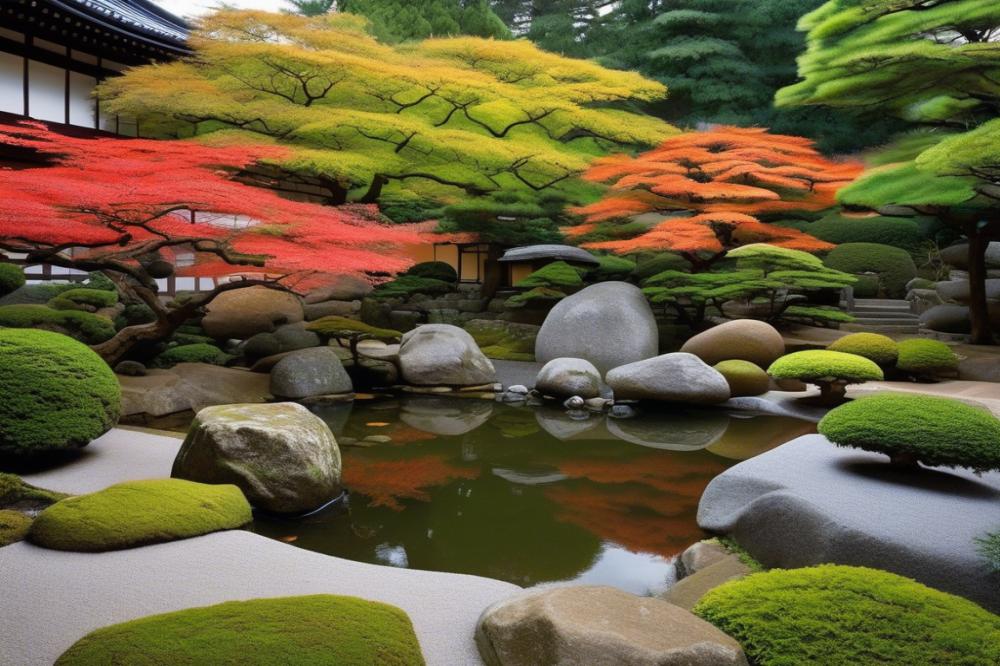

Water plays a vital role in Japanese Gardens. It represents purity, calmness, and even life itself. The presence of water helps to create tranquility and balance. From flowing streams to still ponds, the water features provide a sense of harmony that is essential for a peaceful garden.
Importance of Water in Japanese Gardens
A garden without water feels incomplete. Water features invite visitors to pause and reflect. They can draw the eye and create focal points throughout the landscape. In turn, this enhances the overall aesthetics of the garden. As plants surround them, the reflections create a breathtaking display of nature. With each ripple, the fluidity of life becomes evident.
Types of Water Features and Their Reflective Qualities
There are many types of water features that can be found in gardens. Ponds are perhaps the most cherished. They serve as mirrors that capture the beauty of the environment. Streams and waterfalls bring movement and sound. These elements add diversity to the atmosphere, allowing for deeper connections with nature. Both still and flowing waters encourage contemplation and peace.
Ponds as Mirrors of Nature
Ponds can be seen as mirrors reflecting the sky, trees, and stones. This unique quality allows visitors to experience a different perspective of their surroundings. In Zen gardens, these ponds often symbolize serenity and balance. They remind us of the beauty found in simplicity. When the water is still, it becomes a flawless mirror, allowing one to see themselves amidst the garden’s splendor. This aspect boosts the overall experience of being immersed in such a serene setting.
Use of Mirrors in Landscaping
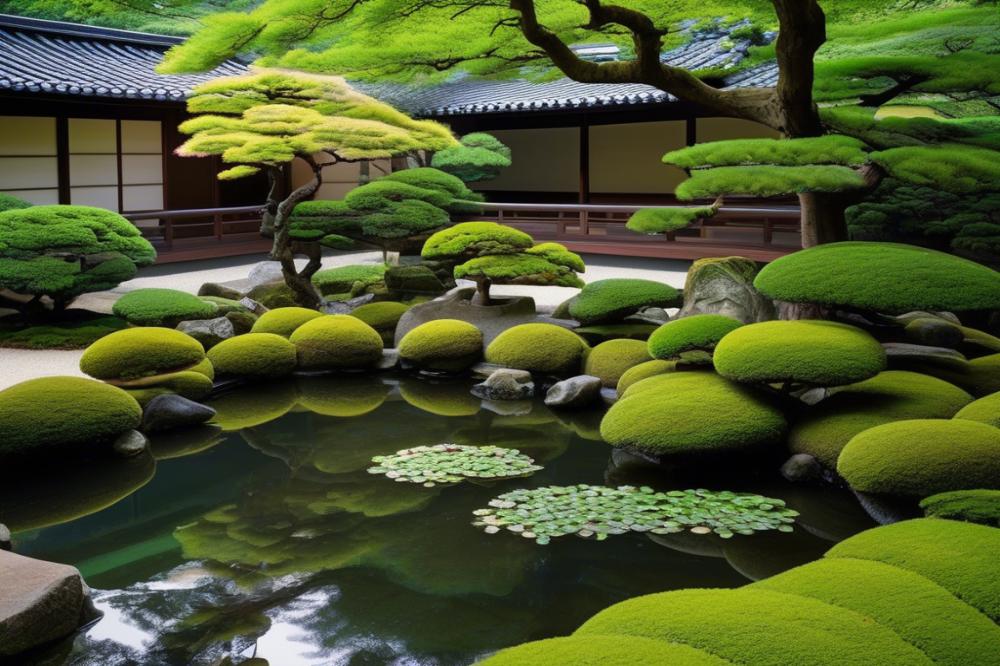

Incorporating mirrors in garden design offers a fresh perspective. Reflective surfaces can change the way we see a space. They create illusions that can make small areas feel larger. Mirrors can be placed near water features or ponds to enhance their beauty. This choice adds a layer of depth, inviting visitors to engage with the scenery.
Psychological Effects of Reflection on Visitors
When people encounter reflective surfaces, they often feel a sense of tranquility. Mirrors catch our attention and can draw the eye to aspects of nature we might overlook. This engagement can bring about calmness, often associated with Zen gardens. Visitors might find themselves inspired by the harmony reflected in the water and stone arrangements. Personal reflections in these spaces can lead to deeper thoughts and appreciation for one’s surroundings.
Enhancing Spatial Perception and Harmony
Utilizing mirrors also enhances spatial perception within a garden. They can break up the monotony of traditional landscaping by creating visual interest. The reflection of trees, stones, and water can form a cohesive look, blending elements together. When positioned thoughtfully, mirrors can amplify the sense of beauty and balance in a garden. This creates a serene atmosphere that celebrates both design and nature.
Stones and Their Reflective Properties
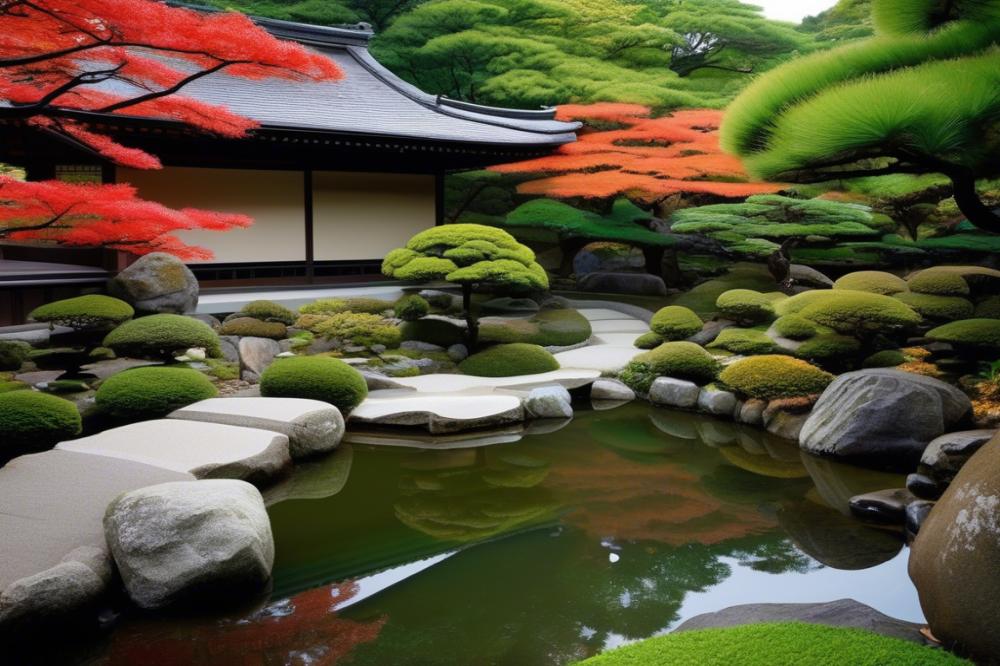

In Japanese culture, stones hold deep symbolism. They represent permanence, resilience, and the connection between the Earth and humanity. This rich meaning is often reflected in their use within gardens. Stones help convey a sense of history and witness to time passing.
Polished stones and carefully arranged gravel bring reflective qualities to the landscape. The shiny surfaces can captivate the observer’s gaze, drawing attention to their unique shapes and colors. When positioned near water features, such as ponds, the reflections can create mesmerizing effects. This interplay emphasizes the natural beauty surrounding them.
Stones play a crucial role in maintaining balance and tranquility within Zen gardens. Their placement is no accident; each stone is selected for its size, shape, and texture. When integrated properly, they contribute to overall harmony. Landscapers know that the thoughtful arrangement of stones can guide one’s path, leading to moments of contemplation and peace.
In addition, the use of gravel in pathways can further enhance aesthetics. The crunching sound underfoot encourages mindfulness and appreciation of the surroundings. As visitors walk through the gardens, they often find themselves in sync with nature. This harmonious experience fosters a deeper connection to both the garden and oneself.
Zen Gardens and Minimalism
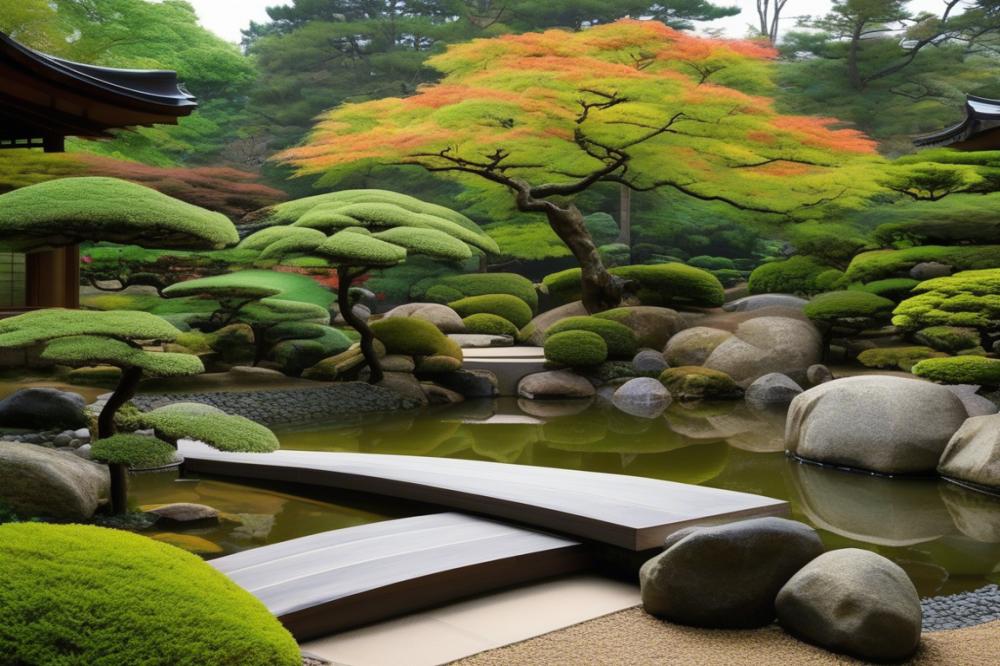

Zen gardens are special spaces that embody peace and simplicity. They are designed to promote a sense of calm through minimalistic elements. These gardens consist of carefully placed stones, sand, and sometimes water features like ponds. Each component plays a role in creating a serene environment that encourages meditation.
Reflective surfaces are often used to enhance the meditative quality of these gardens. Mirrors or still water in a pond can create a sense of depth and connection to the natural world. By reflecting the surrounding landscape, they invite visitors to pause and contemplate. This simple act of reflection can deepen the experience of tranquility. It encourages a deeper connection with nature, leading to a mindful state.
Aesthetics play a significant role in Zen design. The beauty of simplicity is emphasized through the careful arrangement of stones and plants. Every element serves a purpose. Horizontal lines in the sand represent waves, while rocks symbolize mountains. This attention to detail shapes the overall harmony within the space. Visitors find a unique solace in the uncluttered nature of these gardens.
The interplay of light and shadow also enhances the experience. As the sun moves, reflections in water can shift dramatically, inviting observers to engage with the garden anew. The strong contrast between light and dark not only captivates the eye but also stimulates thought. In this way, gardens become a canvas for contemplation.
Ultimately, Zen gardens offer more than just beauty; they provide a path to inner peace. Through their strategic use of landscaping elements, they inspire serenity and reflection. The simplicity found in these spaces resonates with our desire for calm in a chaotic world.
Creating Harmony Through Reflective Design
Techniques for Integrating Reflective Surfaces in Garden Design
Reflective surfaces play a crucial role in garden design. Mirrors and water features, like ponds, are common choices. These elements can double a garden’s beauty while enhancing overall tranquility. Incorporating stones strategically can lead to stunning contrasts. For instance, a pond surrounded by smooth stones catches light beautifully. Reflective surfaces create captivating visuals. They invite visitors to pause and appreciate the surroundings.
Importance of Balance Between Nature and Design
Balance is key when using reflective surfaces. Designers often aim to blend structures with nature seamlessly. This creates a sense of unity. Gardens should never feel forced or unnatural. Thoughtful placement of water and mirrors can ensure a peaceful atmosphere. When nature shines in reflections, it amplifies a garden’s appeal. Visitors are drawn to this harmony. The calmness found in Zen gardens serves as a perfect example.
Examples of Successful Japanese Gardens
Several gardens illustrate the brilliance of reflective design. The Ryoan-ji Temple features carefully arranged stones that reflect simple beauty. Each element is chosen for its aesthetics and meaning. Another notable example is the Adachi Institute of Landscape Architecture. It cleverly uses ponds and trees to create stunning scenic views. Both gardens show how reflective surfaces can amplify nature’s characteristics. Observing these designs can inspire anyone interested in gardening. By appreciating these examples, one can understand the value of harmony in landscaping.
Final Thoughts on Reflective Surfaces in Garden Design
Reflective surfaces play an important role in creating harmony within garden spaces. They bring a calming quality that enhances both the beauty and tranquility of the landscape. Such features, like ponds and water features, not only mirror the surrounding scenery but also invite a sense of peace. The way light dances on water can transform a garden environment, making it feel larger and more open.
Looking ahead, the future of reflective design in gardens seems promising. As more designers and landscapers appreciate the natural benefits of incorporating reflective elements, we may see innovative uses in various landscapes. With a growing interest in sustainable practices, integrating reflective surfaces could also encourage water conservation and biodiversity by attracting wildlife.
The lasting impact of these designs is profound. A thoughtfully curated garden can foster a sense of connection to nature. It offers a sanctuary from day-to-day life, allowing us to recharge. Ultimately, every garden is a testament to the importance of nature in our lives. Through the integration of reflective surfaces, the aesthetics of these spaces are enhanced, deepening the experience of tranquility for everyone who wanders through.

